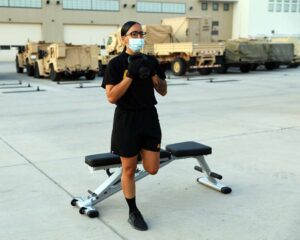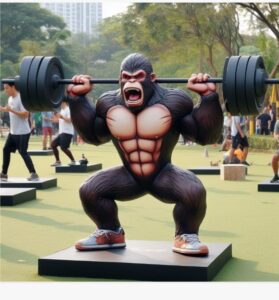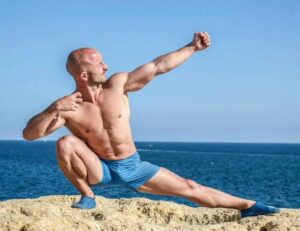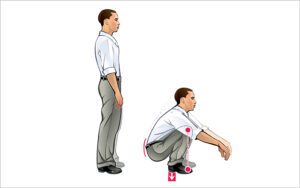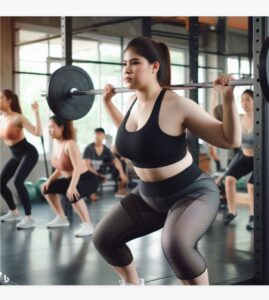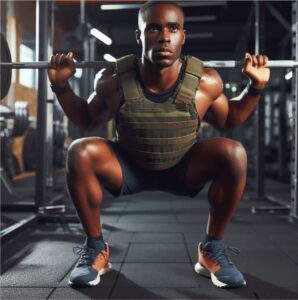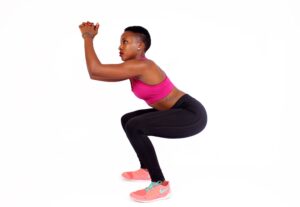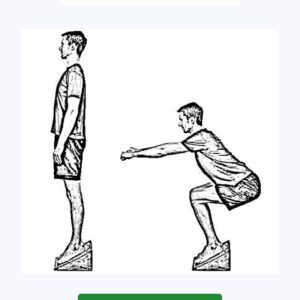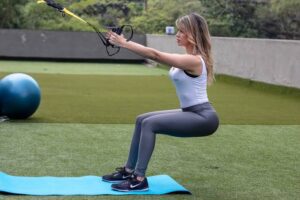
Squats are an excellent compound exercise that target multiple muscle groups and offer numerous benefits for overall strength and fitness. When it comes to squats, two variations that often come up in discussions are back squats and front squats.
Both exercises have their own unique advantages and can contribute to your fitness goals in different ways.
In this article, we will explore the benefits of back squats and front squats to help you understand their differences and choose the one that aligns with your fitness objectives.
Back Squats Benefits: Building Strength and Power
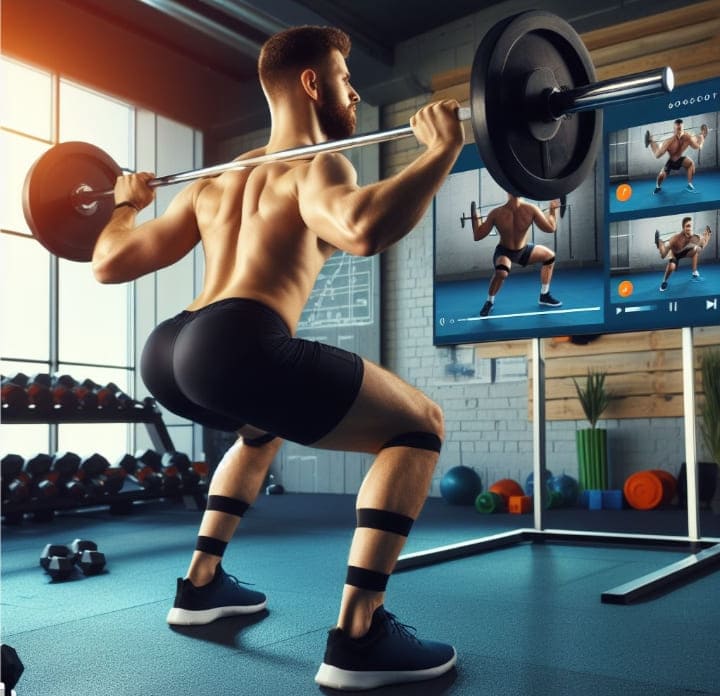
Back squats are performed with the barbell positioned on your upper back, across the trapezius muscles. Here are the key benefits of incorporating back squats into your workout routine:
- Muscle Development: Back squats primarily target the quadriceps, hamstrings, and glutes. They are highly effective for building lower body strength and muscular development. The heavier loads used in back squats can stimulate significant muscle growth.
- Strength and Power: Due to the ability to handle heavier weights, back squats are excellent for developing overall strength and power. They engage large muscle groups, such as the quadriceps and glutes, allowing you to lift heavier loads and improve your explosive strength.
- Core Stabilization: Back squats require strong core stabilization to maintain an upright torso position. This helps strengthen the abdominal muscles, lower back, and obliques, contributing to overall core strength and stability.
- Hormonal Response: Compound exercises like back squats, which involve multiple muscle groups, stimulate the release of growth hormone and testosterone. These hormones play a crucial role in muscle growth, recovery, and overall physical development.
- Sports Performance: Back squats are commonly used in sports training programs due to their ability to improve lower body strength and power. Athletes in sports such as weightlifting, powerlifting, and sprinting often incorporate back squats to enhance their performance.
Front Squats: Focus on Technique and Mobility
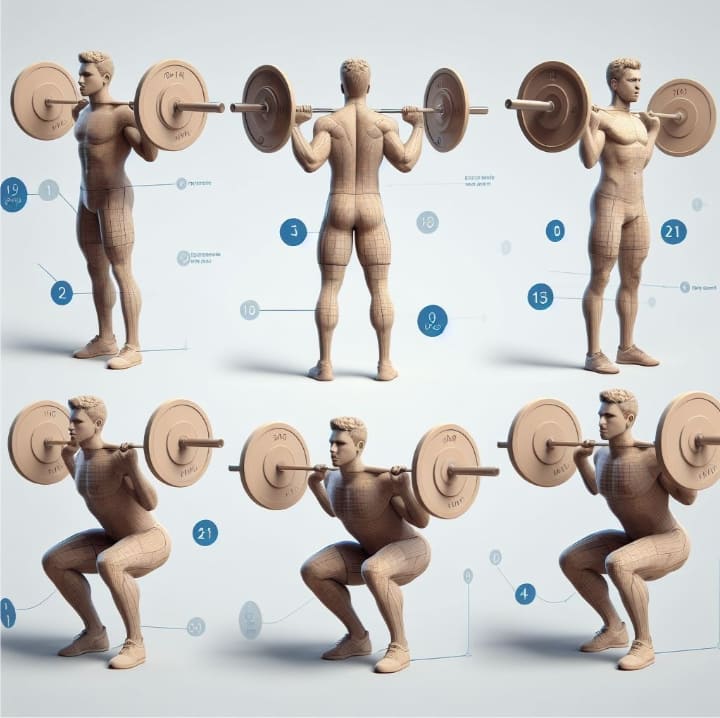
Front squats are performed with the barbell positioned on the front of your shoulders, resting on your clavicles and deltoids. Let’s explore the benefits of including front squats in your training routine:
- Increased Quadriceps Activation: Front squats heavily target the quadriceps muscles. The upright torso position in front squats places more emphasis on the quadriceps, making it a great exercise for individuals looking to specifically target this muscle group.
- Improved Mobility and Flexibility: Front squats require a more upright torso position, which places greater demands on your ankle, hip, and thoracic spine mobility. Regularly performing front squats can help improve your overall mobility and flexibility, ensuring proper form and reducing the risk of injury.
- Core and Upper Back Engagement: The front rack position in front squats demands significant engagement from the core and upper back muscles to maintain an upright torso. This helps strengthen the core and upper back, leading to improved posture and stability.
- Balance and Stability: The front-loaded position of the barbell in front squats challenges your balance and stability. This can improve your overall body control and coordination, making it a valuable exercise for athletes participating in sports that require agility and balance.
- Reduced Stress on the Lower Back: Due to the more vertical torso position, front squats place less stress on the lower back compared to back squats. This makes them a suitable alternative for individuals with lower back issues or those looking to reduce lower back strain.
Choosing the Right Squat Variation
Deciding which squat variation is best for you depends on your goals, training experience, and any specific considerations for your body. Here are a few factors to consider when choosing between back squats and front squats:
- Strength and Power: If your primary goal is to build overall lower body strength and power, back squats are a solid choice. The ability to handle heavier weights in back squats can lead to significant strength gains.
- Muscle Development: Back squats are highly effective for overall muscle development due to the heavy loads involved. If you want to target the quadriceps, hamstrings, and glutes specifically, back squats are a great option.
- Mobility and Technique: If you have limited ankle mobility or struggle with maintaining an upright torso position, front squats can be a valuable tool to improve your mobility and technique.
- Injury or Lower Back Issues: Individuals with lower back issues may find front squats more comfortable as they place less stress on the lower back. However, it’s crucial to consult with a medical professional or qualified trainer before making any exercise modifications.
- Sports-Specific Training: Consider the demands of your sport or activity. Back squats may be more suitable for sports that require maximal lower body strength and power, while front squats can benefit athletes who need improved flexibility, balance, and stability.
Incorporating both back squats and front squatsinto your training routine can provide a well-rounded approach to lower body strength and development.
You can alternate between the two variations or even combine them in a single workout session to reap the benefits of both exercises.
Conclusion
Back squats and front squats are both valuable exercises that offer unique benefits for lower body strength, muscle development, and overall fitness.
Back squats excel in building overall strength and power, while front squats focus on technique, mobility, and targeting the quadriceps.
Consider your goals, training experience, and any specific considerations for your body when choosing between the two variations.
Remember to prioritize proper form, gradually increase weights, and seek guidance from a qualified trainer or coach to ensure safe and effective execution of these exercises.
Incorporating squats into your training routine can enhance your performance, improve muscle development, and contribute to a strong and functional lower body.
Related Posts
Citations:
[1] https://www.healthline.com/health/fitness-exercise/front-squat-vs-back-squat
[2] https://ladder.sport/pages/front-squat-vs-back-squat/
[3] https://barbend.com/back-squat-vs-front-squat/
[4]https://www.menshealth.com/fitness/a43539447/front-squats-vs-back-squats/
[5]https://www.womenshealthmag.com/fitness/a43308221/front-squat-vs-back-squat/


